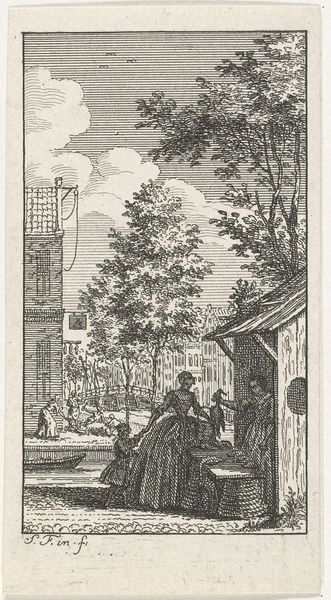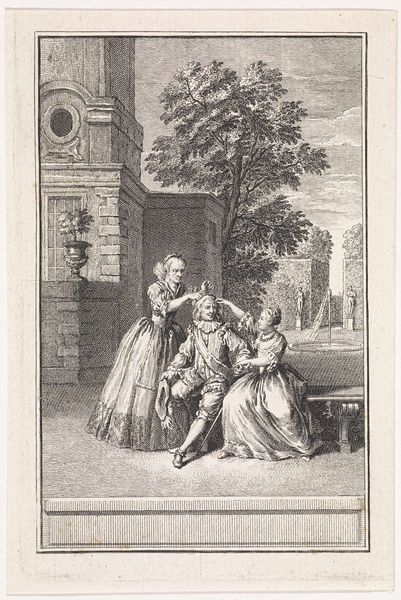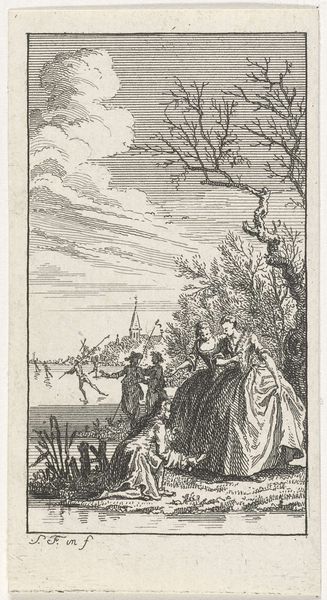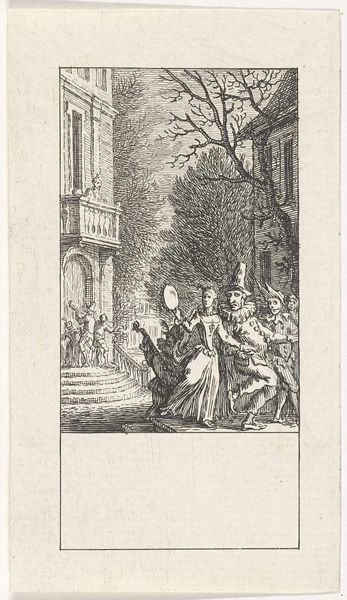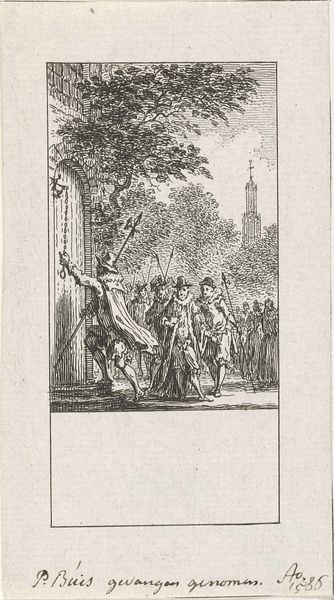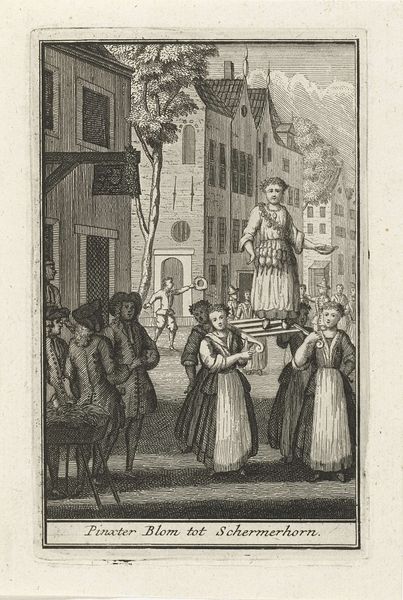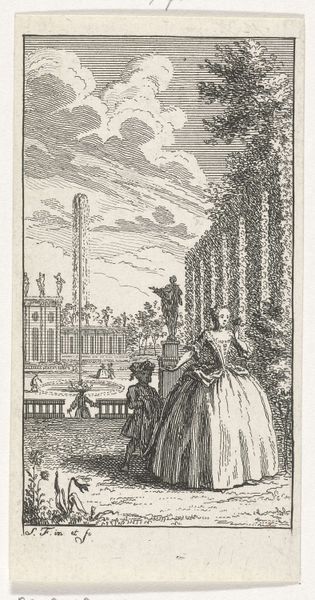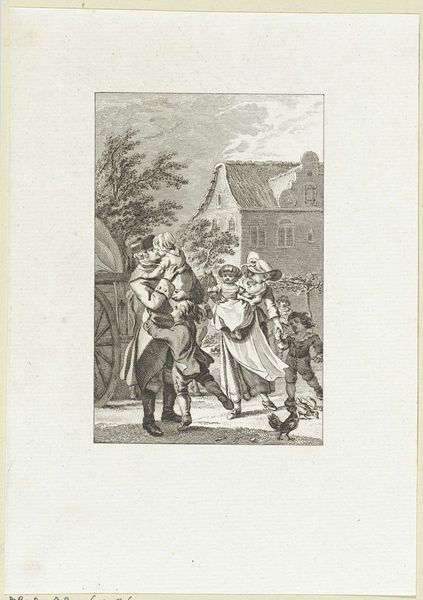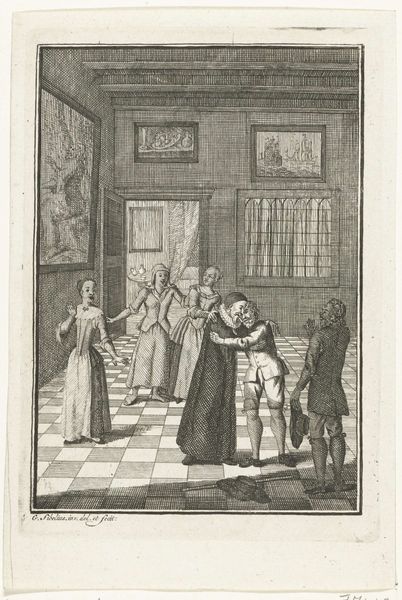
print, etching
#
narrative-art
#
baroque
# print
#
etching
#
cityscape
#
genre-painting
Dimensions: height mm, width mm
Copyright: Rijks Museum: Open Domain
Editor: Here we have Simon Fokke's etching, "Februari," dating somewhere between 1722 and 1784, now held at the Rijksmuseum. I'm immediately struck by the contrast between the refined couple in the foreground and the rather chaotic scene unfolding in the background. What's your take on this piece? Curator: Well, viewing it through a historical lens, the contrast you mentioned is really key. This piece, likely made for print circulation, speaks volumes about the social order and the way people experienced urban life in the 18th century. Note how the refined couple, carefully positioned, literally stand apart from, and possibly above, the group engaging in some kind of labor or activity behind them. Editor: So, you're saying it highlights social divisions? How would the contemporary audience have viewed this? Curator: Absolutely. Remember, prints like this were widely distributed. Consider the potential audience – were they the wealthy elite, finding validation of their status? Or perhaps a middle class aspiring to such heights? The controlled elegance of the couple serves as a powerful visual marker differentiating them, perhaps even commenting on a hierarchy upheld within that time period. And how is that cityscape impacting that couple within their time? Editor: I see, it's not just a charming scene, it's a commentary on society. Looking closer, that background activity almost looks like a protest or maybe workers causing a commotion? Is there a connection? Curator: Possibly. What do you think Fokke’s commentary is, here? Editor: Wow, I had just thought that this Baroque etching depicts a winter social scene. But, understanding it through a lens of power structures and potential social commentary… I see a lot more! Thanks. Curator: And that's the power of historical context, enriching our understanding, and shaping how we experience art, even centuries later.
Comments
No comments
Be the first to comment and join the conversation on the ultimate creative platform.
